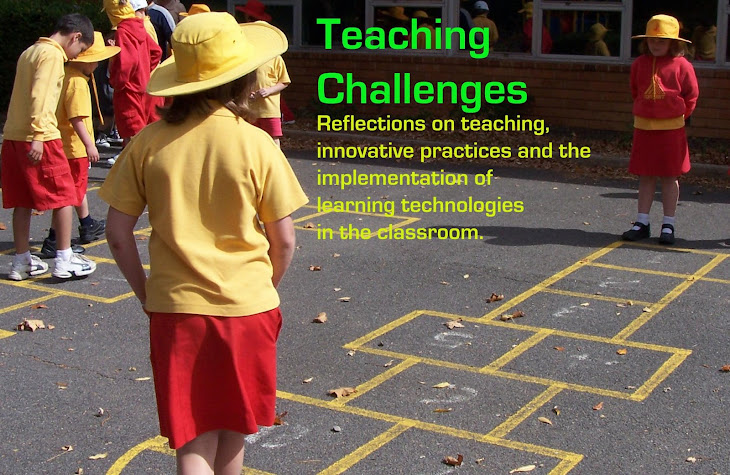The first session was directed by Professor Martin Westwell from Flinders University. He has a well-developed understanding of neuroscience research and is familiar with how this research has been 'applied' in the classroom. The 'teaser' for this session was:
Within today's technology rich world, the environments that we create have the capacity to change the way that young people think, behave and learn in ways that were never before possible.
One idea that I took away from this session is that research findings from neuroscience do not, cannot and should not tell teachers how to teach. This research can 'inform' our teaching pedagogy, but should not take over from our professional judgements based on our relationship with, and knowledge of our students. Martin Westwell talked about the 'Neuro Myths' that people have adopted as they base their teaching on the 'scientific evidence'.
Neuroscience shows that different parts of the brain are active when students learn through visual, aural, and kinaestheic means. This does NOT mean that students should be labeled by their preference and taught only according to this label. Neuroscience may also show that people respond better to material when presented with humour, but we do not label these people as 'humourous learners'! Instead of forcing us to classify our students and teach to each specific learning preference, this information can simply remind us to vary the way that we present information to keep our students' minds active.
Another key idea was that there are no magic answers that are one-size-fits-all. We cannot generalise and say that any one specific strategy or technique will lead to better learning outcomes. Again, it comes down to the professional judgement of the teacher, who knows the intricate details of the needs of his/her students. We need to be creating an environment that will best meet these needs - taking from a range of strategies that are relevant to this group of children at this point in time.
Martin Westwell spoke about an experiment done on some mice. There were three groups of mice: A control group with no Huntington's disease, a group with Huntington's disease in a basic cage, and a group with Huntington's disease with an enriched environment (lots of cool playthings for mice!). Huntington's disease is a genetic disease - if you have the gene, you get the disease. HOWEVER, only 20% of the mice in the enriched environment showed symptoms of Huntington's disease, as opposed to 70-100% (can't remember, sorry!) for the ones in the basic cage. Their brain cells developed more interconnectivity than the brain cells of the mice in the basic cage. The point of all of this was the impact of the environment. By providing the right kind of environment, we can overcome all sorts of evils...
So, what does an Enriched Environment for children look like?
Martin Westwell suggested that it is:
- multi-sensory
- relevant
- contains emotional content
- involves interpersonal interaction (interdependent learning and parental engagement)
- provides for exercise
- considers nutrition/hydration
- makes use of blue light
I am interested in ideas from your experiences. What do you think are the key features for an Enriched Environment for children?








What a great post! I am usually a visual learner but depending on the activity, I might be an auditory or kinesthetic-tactile learner. As you said, one size does not fit all. Thanks for saying that we shouldn't label kids and only teach them in one way.
ReplyDeleteHi Penny, I found this stuff so interesting. With my work I read alot of research about synapses in the brain and how these pathways can be "closed off" or "shut down" from high levels of cortisol- the stress hormone in children's developing brains.
ReplyDeleteSo I suppose there is lots to write about what a children optimum learning environment should be like but firstly for me..I would like it to be a safe and stress free, nurturing place as possible. . Not sure if this is possible all the time but most of the time would be great wouldn't it. Keep up the good work! Cheers Ali